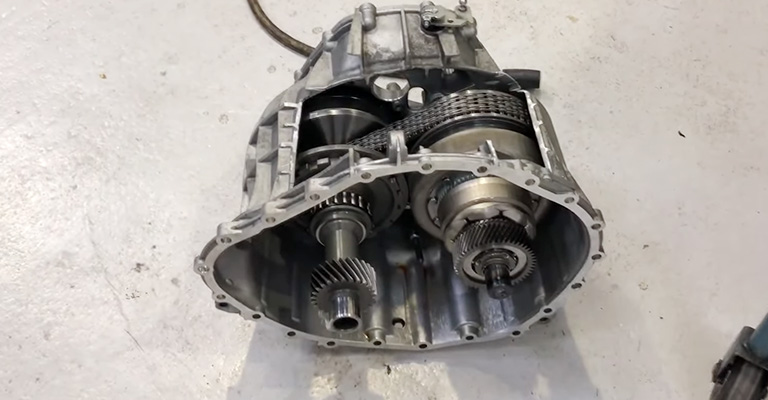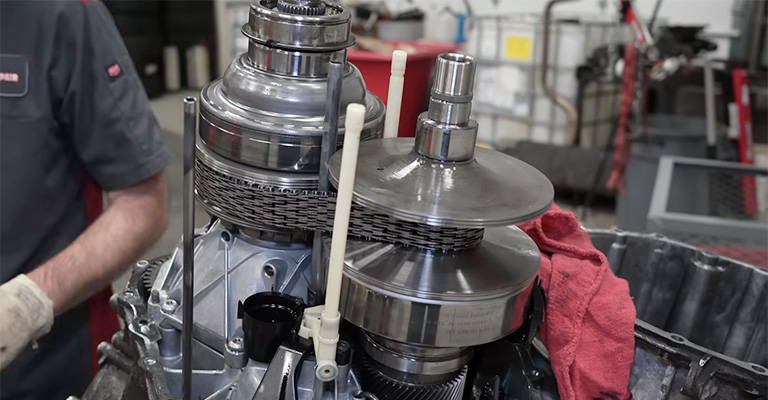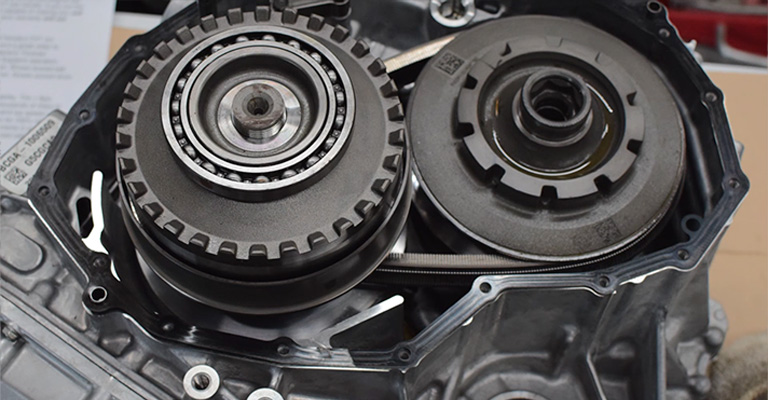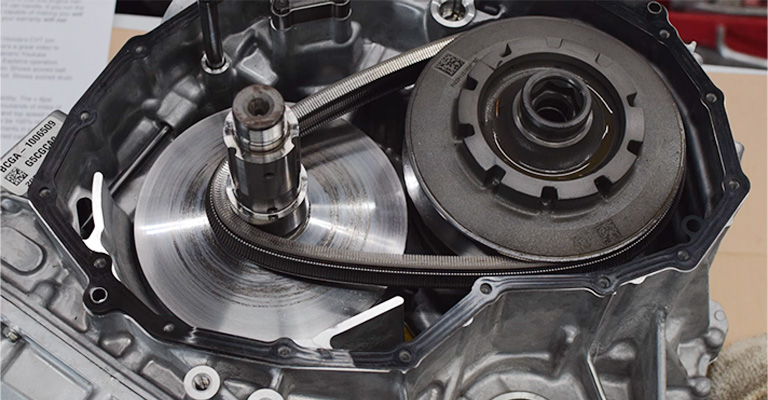Honda offers a wide variety of models with either an automatic transmission or a continuously variable transmission. The CVT, or continuously variable transmission, functions similarly to an automatic transmission.
There are, however, some Hondas that do not come with CVT transmissions. Honda Civic Type R, Honda Fit (with manual transmission), Honda Passport, Pilot, Ridgeline, and Odyssey do not have CVTs.
Even though CVTs operate much like traditional automatic transmissions, they differ significantly in their construction. There are no gears in a CVT.
Power is transferred from the engine, through the transmission, and to the drive wheels using two cone-shaped pulleys.
The width of each pulley can be varied according to the power input, hence the name Continuously Variable Transmission. As a pair, these pulleys allow CVTs to accelerate smoothly and powerfully.

What Are CVT Transmissions and How Do They Actually Work?
The CVT stands for Continuously Variable Transmission, using a belt or a chain system to change the gear ratios continuously. This belt or chain system is also called the pulley system.
The pulley system consists of two cones and a belt. Cones are connected towards the engine and wheels, while the belt runs between these cones just to change the gear transmissions.
But how does this entire system work, then?
Well, the mechanism is super simple! As you accelerate your vehicle, the cones move closer toward each other, making a reduced gear ratio that eventually allows you faster accelerations.
Similarly, when you stop accelerating the car, cones move apart from each other to create an optimal gear transmission that maximizes fuel economy.
Benefits of CVT Transmission

- CVT transmission provides a seamless and exceptionally comfortable driving experience with no apparent shift points.
- It enhances the engines’ overall performance for any given driving situation.
- This CVT transmission even brings high fuel efficiency and reduced emissions.
Drawbacks
Despite all the advantages, some drivers may find this technology annoying! Why? The reasons are:
- There’s no shifting feel, making it impossible for them to determine if their car is accelerating fast or slow.
- They’re less durable than conventional transmissions.
- You might feel a jumping movement while processing the accreditation’s initial state.
An Overview of Honda’s History with CVT Transmissions

Car enthusiasts love Honda vehicles due to their cutting-edge designs and superior transmission technology.
Honda introduced their CVT technology in the late 1990s, known as the Continuously Variable Transmission-Matic (CVT-Matic).
This technology was launched in 1995 in their Civic CX Model. And by then, it gained massive popularity due to its effective and seamless performance.
After the sky-rocketing acceptance from the public, Honda continued to improve it and incorporated it into their other vehicles, including;
- Fit
- HR-V
- CR-V
- Accord
Do All Hondas Have CVT Transmissions? An Overview

No, all Hondas don’t have CVT transmissions, and this is because Honda offers other transmissions like traditional automatic or manual. Here’re the two major factors influencing the transmission type in Honda models.
The Trim Level
For instance, if we talk about the Civic, all trim levels of the Civic model include a CVT transmission as standard equipment that uses pulleys and belts to activate different functions from the torque. But in other models, you won’t find this specific feature.
Engine Configuration
Let’s say we talk about Accord; it comes standard with CVT Transmissions but only for a few engine configurations or trim levels.
The transmission-driven pulley rate must match the electric layout to change the gear ratio constantly. Otherwise, it can’t have CVT!
Why Pick Honda’s Transmission Technology Over Others?
There are many reasons to choose Honda’s transmission technology over others. One is due to its diverse lineup that includes traditional and CVT transmissions!
But what if other automakers, like Ford or Toyota, also offer traditional and CVT automatic transmissions? How to assess?
Let us briefly explain the difference between Hondas’ transmission technology over the other two.
There is no denying that Ford provides sophisticated dual-clutch gearboxes that Honda does not. But still, Honda takes the best bet!
This is because of the commitment to developing and improving exceptional CVT technologies and efficient transmissions, which provide drivers with a comfortable and practical ride experience.
Why Honda Offers Different Transmission Options?
Honda offers different transmission options for its vehicles because it understands that different drivers have different preferences and expectations for their cars. By providing a variety of choices, Honda aims to satisfy its customers and deliver a high-quality driving experience.
Or the straight answer is due to public demand.
However, a few may choose something other than this due to the less shifting feel. So, without question, some people find the manual transmission better than the automatic one.
And this is one of the significant reasons why Honda always offers different transmission options.
However, technical reasons are also there. Whether it be for the fuel economy or the overall engine performance.
In a nutshell, to ensure the user gets the best Honda experience, manufacturers always use various transmission options for their customers!
FAQs
If you’re unsure whether your Honda vehicle has a CVT transmission, here are a few ways to find out. Check your vehicle’s manual page or go to Honda’s official website to check if your car has a CVT Transmission.
Yes absolutely! Most Honda drivers have found their Honda vehicles with CVT transmissions to be very safe and effective. It even aids with your fuel economy and boosts your engine performance.
A CVT will offer decent service for at least 160,000 kilometers. Although it’s less than a manual transmission, taking good care of your vehicle can expand its lifespan.
Conclusion
Having a built-in CVT transmission is a win-win moment for Honda users. But unfortunately, the answer to “Do all Hondas have CVT transmissions?” is negative.
CVTs undoubtedly make transmissions the fastest. So, if you plan on buying a new car, get one with a CVT transmission for your convenience.

Leave a Reply